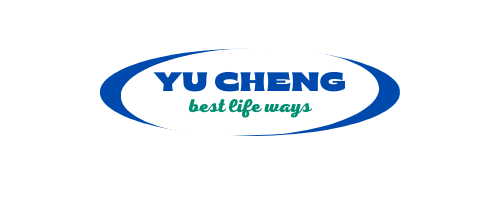Ultrafiltration membrane or Reverse Osmosis membrane
Ultrafiltration (UF) membrane:
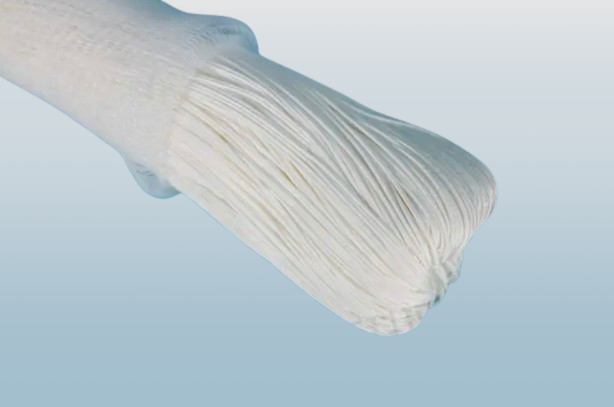
Ultrafiltration (UF) membrane is a type of filtration membrane with pore sizes smaller than 0.01 micrometers. It is composed of numerous ultrafiltration membrane fibers. On a one-meter-long ultrafiltration membrane fiber, there are approximately 6 billion pores, each 0.01 micrometers in size. The 0.01-micrometer pore size can filter out most harmful substances, such as silt, rust, suspended particles, colloids, large organic molecules, microbes, bacteria, etc., while also retaining the minerals and trace elements in the water.
In the field of household water purifiers, hollow fiber ultrafiltration membranes are widely used in end-point water purification due to their high packing density, large effective area, high water throughput, simple operation, and ease of cleaning. When water enters the ultrafiltration membrane, under the action of water pressure, purified water permeates through the walls of the ultrafiltration membrane tubes. Impurities in the source water, such as bacteria, rust, and colloids, are trapped, achieving the purification process. The pore size only allows water molecules, beneficial minerals, and trace elements to pass through, thereby retaining the minerals and trace elements beneficial to the human body.
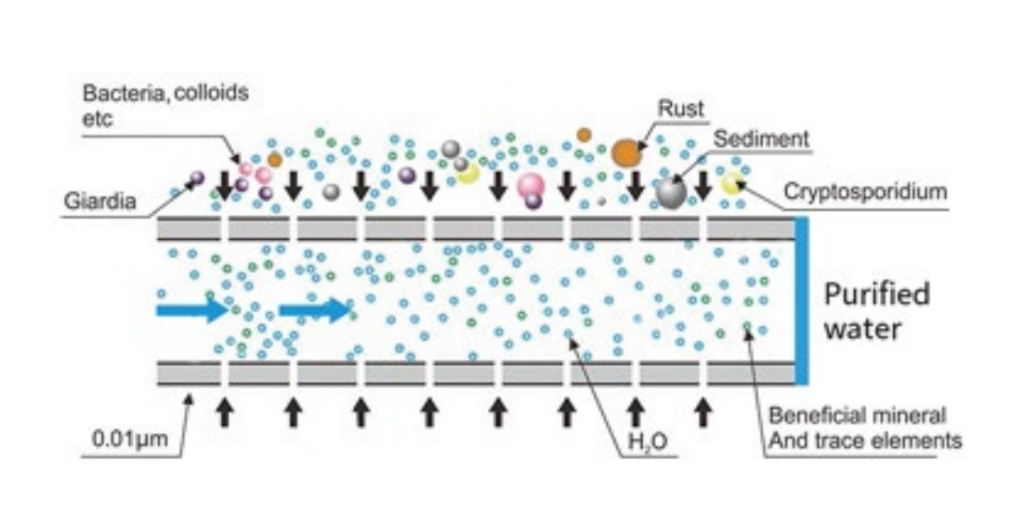
RO membrane:
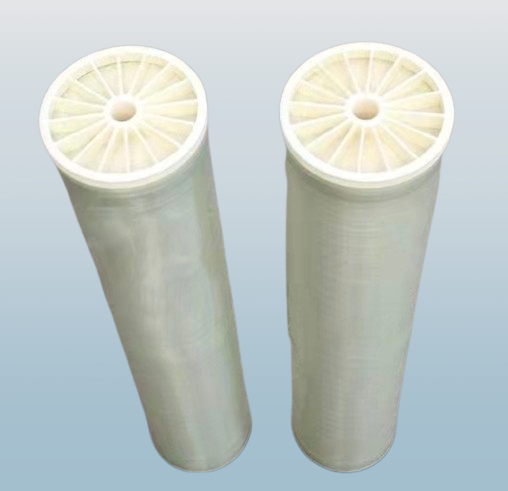
RO membrane, or Reverse Osmosis membrane, operates on a principle that is counterintuitive to natural osmosis. Normally, water moves from an area of low solute concentration to an area of high solute concentration. However, when pressure is applied to the water, it flows from a higher concentration to a lower concentration—this is the principle of reverse osmosis. The pore size of an RO membrane is incredibly small, about one-millionth the diameter of a human hair (0.0001 micrometers), which is invisible to the naked eye. Bacteria and viruses are about 5,000 times larger than the pores, so they, along with other impurities and heavy metals, are flushed away in the waste water stream. Only water molecules and some mineral ions can pass through the RO membrane.
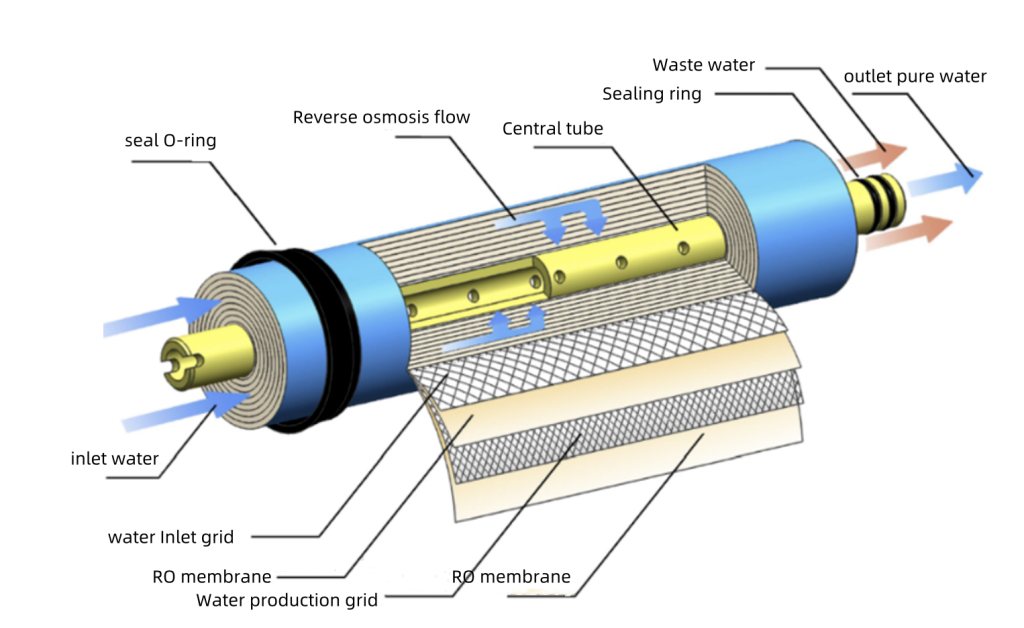
The working principle of an RO membrane involves applying pressure that is higher than the osmotic pressure, allowing water molecules and other small molecules to pass through the reverse osmosis membrane while blocking other impurities and pollutants. This process achieves water separation and purification.
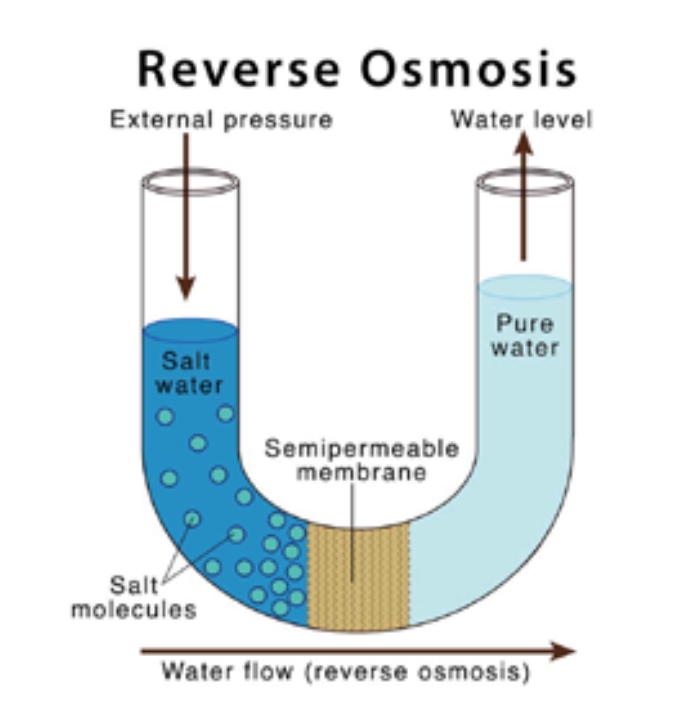
RO membranes are widely used in the field of water treatment, including desalination of seawater, desalting of brackish water, and purification of industrial water. They can effectively remove most impurities and pollutants from the source water, allowing only water molecules and other small polar solute molecules to pass through, thus producing purified water.
Absolutely, you’ve got the key differences down:
Ultrafiltration (UF) membranes are known for their fast water output and high flow rates. They operate on the principle of physical filtration without producing any wastewater, which is a significant advantage in terms of water conservation. UF membranes can effectively remove many types of contaminants, including bacteria and suspended solids, while retaining beneficial minerals in the water.
On the other hand, Reverse Osmosis (RO) membranes offer a higher level of filtration precision, capable of removing not only bacteria and suspended solids but also viruses, heavy metals, and even dissolved salts. This makes RO-treated water extremely pure. However, the process is slower and produces a lower water yield. Additionally, RO systems generate wastewater, RO systems are generally more expensive than UF systems, both in terms of initial investment and maintenance costs.
Choosing between UF and RO systems depends on the specific needs and water quality requirements. If the goal is to have highly purified water and the removal of dissolved contaminants is a priority, an RO system would be the better choice despite its higher cost and wastewater production. If the water source is relatively clean, a UF system would be sufficient and more cost-effective.
Disclaimer:
Information and statements made on this web are for education purposes and are not intended to replace the advice of your family doctor.
The products mentioned here are not intended to diagnose, treat, cure or prevent any disease or health condition.No medical claims are being made.
